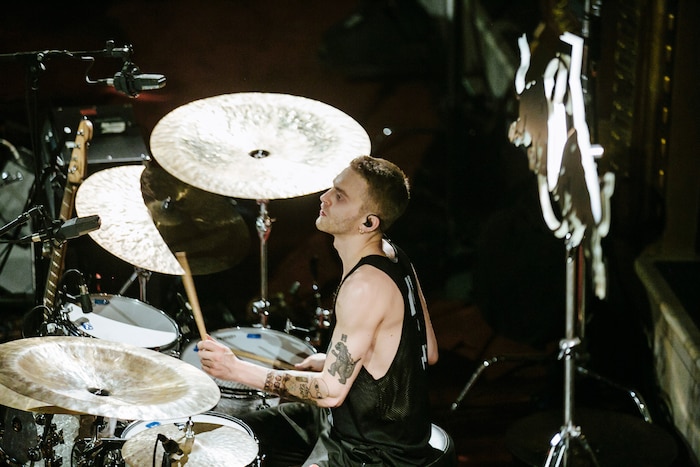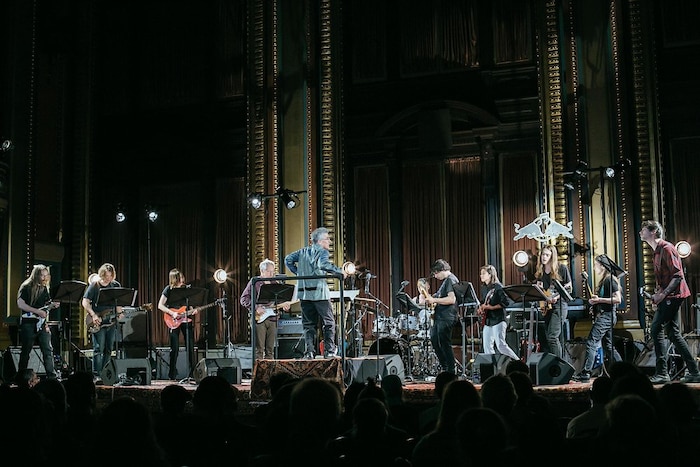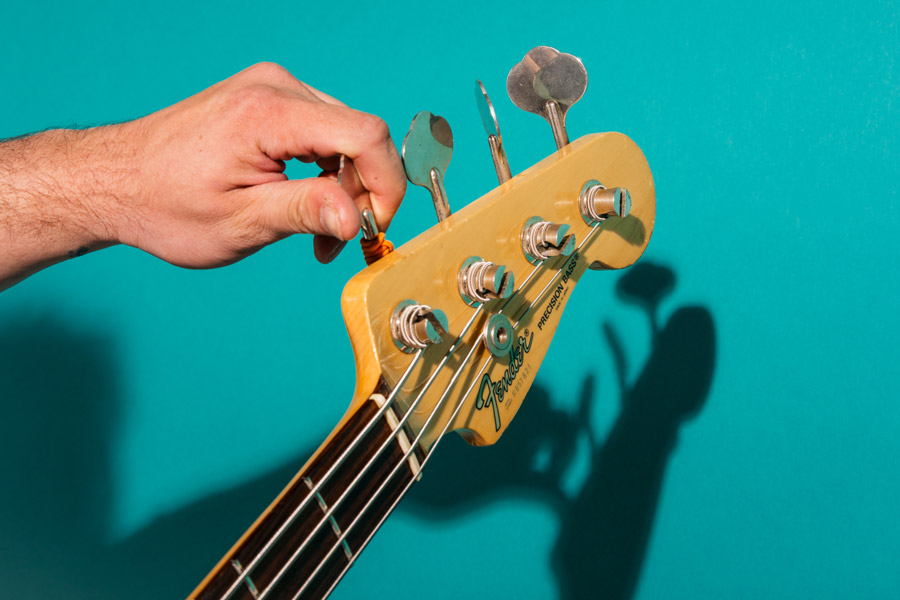Learning to Drum in Glenn Branca’s Guitar Symphonies
Greg Fox talks about the experience of being the lone drummer in a maelstrom of guitars
An all-star ensemble gathered at New York City’s Masonic Hall earlier this week to celebrate the idiosyncratic works of Glenn Branca. Amongst the eight formidable guitarists and one bass player who reimagined Branca’s 8th, 10th and 12th Symphonies together, Greg Fox, who in the past has lent his talents to the likes of Colin Stetson, Zs, Guardian Alien and Liturgy, stood out as both a skilled timekeeper and the group’s sole drummer that night. We chatted with him about preparing to play symphonies that had no previous recordings, and what surprised him about playing these challenging numbers.

Were you intimately familiar with Branca’s symphonies before collaborating with this ensemble?
I was familiar with some of his work. But I never dove too deep. I was familiar with who he is and some of the people he’s worked with over the years. I’ve worked a bit in the studio with Wharton Tiers, who played music with him way back. I have some friends who were around the ’80s music scene in New York, playing music with each other, and in the art scene. So I talked with a lot of those people about what things were like in the scene back then. There’s a certain familiarity, but at the same time, a certain lack of familiarity going into this.
Having that familiarity and lack of familiarity seems like the ideal mindframe to be in for this sort of thing.
Yeah. I didn’t really have a lot of preconceived ideas about it. It was really just a matter of specifically approaching the work, the particular pieces, and listening to the recordings of the 8th and the 10th [Symphonies] and figuring out what the drummer on that recording is doing. And figuring out what parts of that I wanted to try to recreate and what parts I wanted to create something new for. For the 12th, there’s no recordings, and Glenn doesn’t write drum parts, I guess. Or at least, not for the pieces we played. So I was doing a lot of figuring out, some of it beforehand and a lot while we were rehearsing.
What was conceiving that like, since there were no parts written out?
There was no sheet music for the drums, for any of the pieces that we played. The impression I get – I might be wrong about this – but there aren’t written drum parts for a lot of Glenn’s work. And it’s sort of a dialogue between the drummer and Glenn, figuring out the pieces for performance. I didn’t have any sheet music. I had some notes about tempo changes and dynamics. But other than that, it was a matter of knowing, generally speaking, what’s happening at what measure and figuring that out mostly through the rehearsals.
I always wear plugs and it was surprising how loud it was.
Was that process daunting or liberating to figure out?
I don’t know that I’d say either. It’s cool. I like working that way. Right now, in this session I’m in there’s sheet music that I’m looking at. But we’re also figuring it out as we go. I find that with the work that I do it’s always somewhere in the middle. I don’t think I’ve ever really been in a situation where someone’s handing me a part and telling me exactly what to play. And if that does happen, it ends up being more collaborative, ultimately. But a lot of times I get left to my own devices in terms of making stuff up and seeing what resonates with the other people around me. If people are digging it, then that sort of becomes the template.
I was asked if I could read sheet music before accepting. So I kind of assumed I’d be reading, but there wasn’t any. It was a big question mark in a lot of ways until we got to the studio and started working on it.
You mentioned listening to the recordings ahead of time to see what you wanted to recreate and what new things you wanted to try. How did you make that distinction?
I think the main thing that I kept was the basic rhythmic approach to the pieces. Based on the music I’ve listened to of Glenn’s and listening to the 8th and the 10th, there’s a certain vibe that carries through with the drums there. So it’s sort of about understanding what that is as a reference point, and using that as a place to start from. There wasn’t really a conscious choice about what to do differently, just more figuring out where it made sense to jump ahead or take it where I was intuitively going with it instead of trying to recreate it.

I guess it’s also hard to know until you’re with everyone in the rehearsals, too.
Definitely. And also, vibing off the other people in the room, seeing how they react to certain things you do. But when people start moving their heads or bodies in reaction to what the drums are doing, that’s how I start to tune and say, “Ok, these things are working,” and go from there. I was given a lot of freedom. I would ask Glenn and the conductor [John] for notes during the rehearsals, and they had a couple of notes. But I was mostly encouraged to keep doing what I was doing. I was trying to do something that worked for them and everyone around me. I guess it worked for everybody that way.
Did anything surprise you about the performance itself?
I could hear better in the show than I could in the rehearsals, I think because of the room. And the way the notes on the guitar were decaying and actually how that’s part of the compositions didn’t really hit me when we were in rehearsals. It was cool to play with what was going on there. That was the main thing.
Otherwise, the thing that surprised me in rehearsal, and especially during the show, was how much my ears were ringing, even with earplugs. I always wear plugs and it was surprising how loud it was. I’m definitely used to loud music and playing loud music, but that was a bit of a surprise. I’m curious to hear recordings or see video of it, because I have no idea what it was like.
